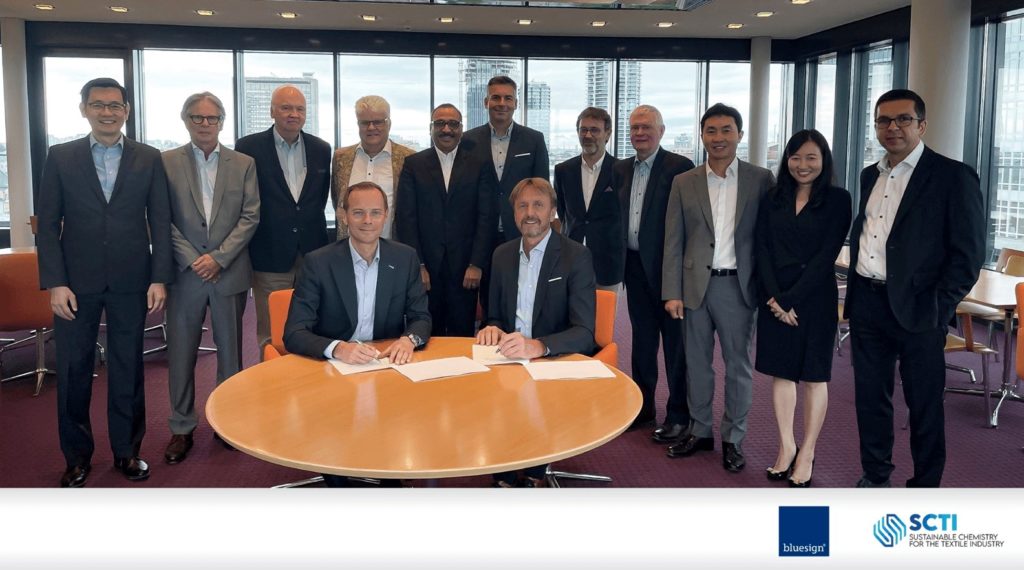
Bluesign has teamed up with Sustainable Chemistry for the Textile Industry (SCTI™) to develop a sustainable chemistry index that will provide a standard communication guide for chemical suppliers, manufacturers, brands, and NGOs.
The first-of-its-kind index is intended to inspire change in the industry by making it easier for stakeholders to assess the sustainability of textile chemical products against the highest standards while safeguarding the intellectual property (IP) of participating chemical companies. IP protection is critical to ensuring ongoing investment in sustainable solutions.
SCTI is an alliance of leading chemical companies that strives to empower the textile and leather industries to apply sustainable, state-of-the-art chemistry solutions that protect factory workers, local communities, consumers and the environment.
Bluesign will implement and manage the sustainable chemistry index as an independent authority with a holistic approach to help companies throughout the textile supply chain improve their sustainability performance.
Chemical products, such as dyes and textile auxiliaries, are often characterized with the attribute of “free of a certain substance.” Rather than prioritizing ingredients only, the chemicals and the production site where they were created must also meet certain criteria regarding environmental performance, occupational health and safety, and product stewardship performance to be Bluesign® APPROVED.
The sustainable chemistry index will be reserved for substances that offer transparency on a number of additional indicators including the chemical’s circularity viability, greenhouse gas emissions during production, and the source of the raw materials. The sustainable chemistry index will also require that the downstream use of the chemical is optimized, meaning, for example, that it promotes resource saving in textile finishing. Additionally, excellent corporate governance paired with well-defined environmental and social (ESG) goals will be a pre-condition.
Dr. Wolfgang Anton Schumann, SCTI chairman, said: “Through its independent position, Bluesign has earned the industry’s trust to provide sustainable chemical solutions and impact reductions across the supply chain for the past two decades.This partnership exemplifies our organizations’ joint expertise and how collaboration creates solutions that can drive meaningful change across an industry to reduce impact on people and our planet.”
Daniel Rüfenacht, Bluesign CEO, added: “SCTI offers deep sustainability knowledge in the chemical industry. The new sustainable chemistry index will help the industry progress beyond current regulations and realize the EU Chemicals Strategy for Sustainability by providing textile chemical users a clear rating on a substance’s environmental and social impact to advance decision-making.”
The mission for the partnership between Bluesign and SCTI, and the sustainable chemistry index in particular, is to drive transformational change through sustainable chemical solutions. Providing textile and apparel industry players with a verified inventory of sustainable chemical products is a first step on this shared journey.
 TEXTILES.ORG
TEXTILES.ORG


